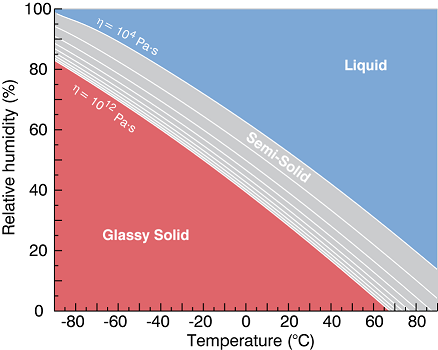Specialized iNANO Lecture: Phase transitions of amorphous aerosols
Associate professor Markus Petters, Department of Marine, Earth, and Atmospheric Sciences, North Carolina State University, USA.
Info about event
Time
Location
AUD VI (1510-213), Department of Chemistry, Langelandsgade 140, 8000 Aarhus C

Associate professor Markus Petters, Department of Marine, Earth, and Atmospheric Sciences, North Carolina State University, Raleigh, NC, USA
Phase transitions of amorphous aerosols
The phase state of atmospheric aerosol affects a wide range of processes, including optical properties, droplet and ice nucleation rates, gas-particle exchange rates, and condensed-phase chemical reaction rates. Recent laboratory and field experiments have shown that organic aerosols can exist in amorphous semi-solid or glassy phase states at room temperature. The phase state and the related particle viscosity is determined by the particles’ chemical composition. Specifically, the number and type of oxygenated organic functional group are important determinants of the viscosity. Viscosity also strongly depends on temperature (T) and relative humidity (RH). Amorphous phase state diagrams can be used to assign the phase state of organic aerosol over a wide range of T and RH. The phase diagram shows a clear demarcation between liquid and glassy states and permits quantification of aerosol viscosity in the semi-solid regime (104 to 1012 P a·s).
In this talk I will cover (1) recent insights into how functional group composition controls the viscosity (and phase state) of organic aerosols; (2) a new technique on how coalescence time-scale can be used to measure phase transitions of ~100 nm diameter particles; (3) application of this technique to obtain amorphous phase state diagrams of organic aerosol, including pure components, organic-inorganic mixtures, and secondary organic aerosol generated from the oxidation of biogenic precursors; and (4) a computational model to construct the phase state diagram of organic aerosols. These insights will be discussed in the context of atmospheric aerosol-cloud processes, including absorptive aerosol water uptake, cloud droplet nucleation, and ice crystal nucleation.

Amorphous Phase State Diagram of Sucrose Aerosol
Host: Professor Merete Bilde, Department of Chemistry, Aarhus University
